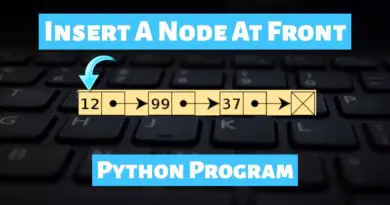Create A Stack Using Array in Python
Typically when solving programming questions, sometimes when the brain is clustered with multiple thoughts. Even the simplest fundamentals of programming seem very difficult to apply while solving a question. So having a strong grip on the fundamentals of programming mostly automates the thought process for applying these concepts while writing up a code. Stack is one of the most basic data structures you must know. Therefore in today’s article, we’ll learn how to create a stack using Array in Python.
So open up your IDE and let’s get started real quick. Once you understand the logic practice this program on your own to make your brain work in a problem-solving way. This is a pretty easy question so you might not get asked in an interview but practising this question will make your grip more firm in the Python language.
What’s The Approach?
- We will create an array.
- If there’s no element in the array, we will return
-infinitealso the stack will be called underflow.
- The element added at the last will be removed first if we want to delete elements from the stack.
push()method will be used to insert the elements in the stack, thepop()method will be used to remove an element from the stack.
Also Read: How To Install Python on Windows 11
Python Program To Create A Stack Using Array
Input:
push(stack, str(5))
push(stack, str(10))
push(stack, str(15))
(pop(stack)
Output:
5 pushed to stack
10 pushed to stack
15 pushed to stack
15 popped from stack
# Python program for implementation of stack
# import maxsize from sys module
# Used to return -infinite when stack is empty
from sys import maxsize
# Function to create a stack. It initializes size of stack as 0
def createStack():
stack = []
return stack
# Stack is empty when stack size is 0
def isEmpty(stack):
return len(stack) == 0
# Function to add an item to stack. It increases size by 1
def push(stack, item):
stack.append(item)
print(item + " pushed to stack ")
# Function to remove an item from stack. It decreases size by 1
def pop(stack):
if (isEmpty(stack)):
return str(-maxsize -1) # return minus infinite
return stack.pop()
# Function to return the top from stack without removing it
def peek(stack):
if (isEmpty(stack)):
return str(-maxsize -1) # return minus infinite
return stack[len(stack) - 1]
# Driver program to test above functions
stack = createStack()
push(stack, str(5))
push(stack, str(10))
push(stack, str(15))
print(pop(stack) + " popped from stack")



